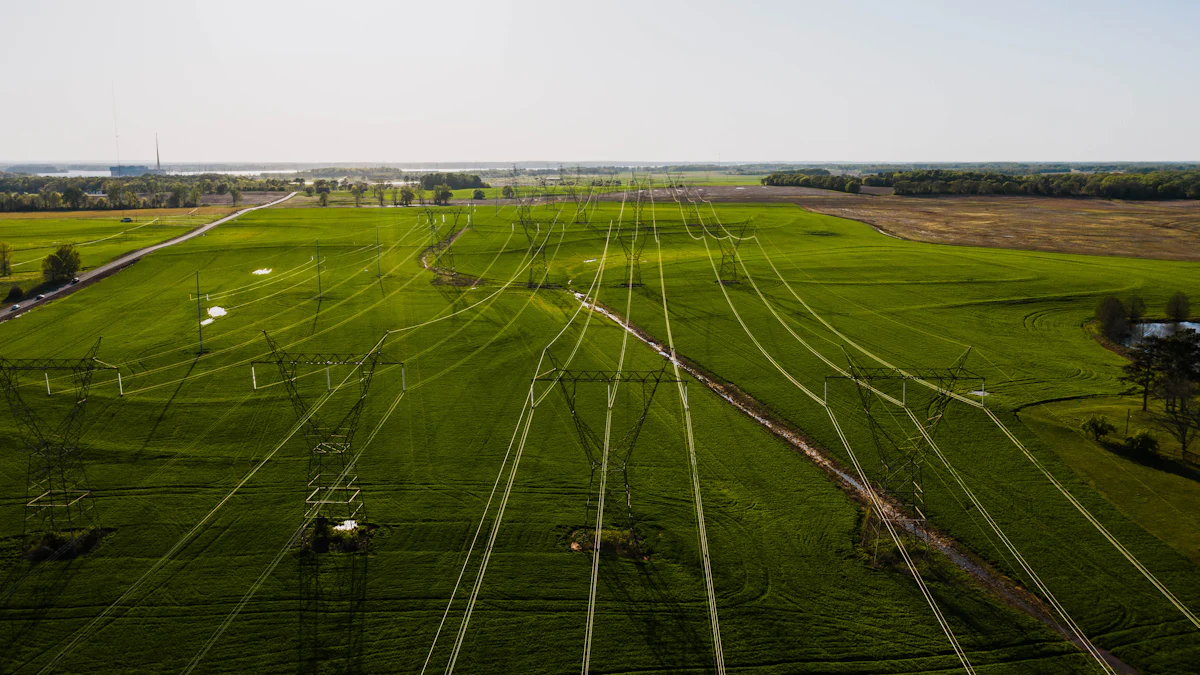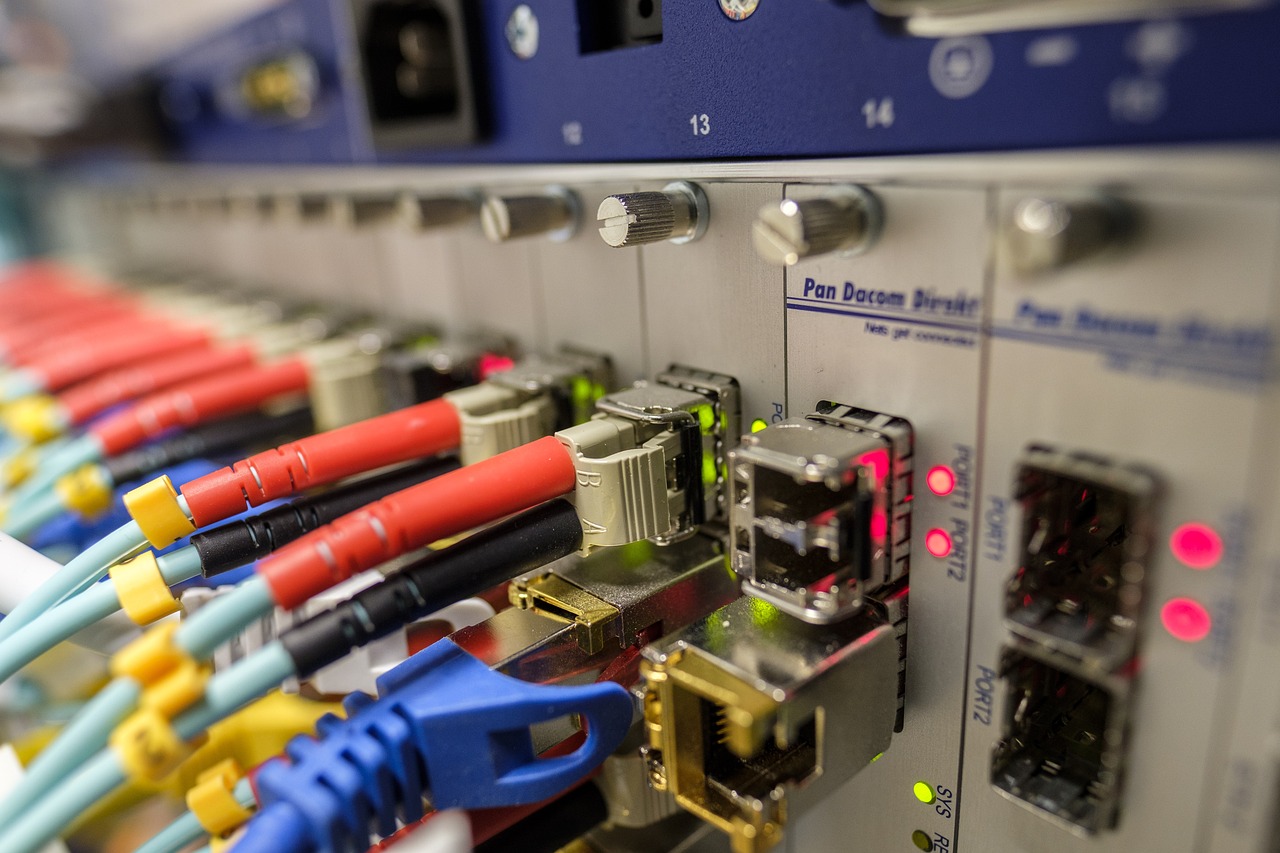Unraveling the Impact of Electromagnetic Fields on Optical Fiber Communication
Optical Fiber Communication stands as a cornerstone of modern telecommunications, enabling unprecedented transmission capacities that outstrip even electronic memory advancements. With the ability to carry millions of telephone channels, optical fibers have revolutionized data transmission. Understanding electromagnetic interference is paramount in maintaining the integrity of these communication systems. This blog delves into the intricate relationship between electromagnetic fields and optical signals, exploring their impact and mitigation strategies.
Understanding Electromagnetic Fields

Definition and Sources
Natural Sources
The environment emits electromagnetic fields naturally, influencing various biological processes. These fields originate from cosmic rays, lightning strikes, and the Earth's magnetic field. Their impact on living organisms has been a subject of extensive research.
Man-made Sources
Human activities generate electromagnetic fields through technologies like power lines, electrical appliances, and wireless communication devices. The proliferation of these sources has raised concerns regarding their effects on human health and electronic systems.
Impact on Optical Fiber Communication
When considering the Optical Fiber Communication realm, it becomes evident that electromagnetic fields play a crucial role in shaping the efficiency and reliability of data transmission. The influence of these fields manifests through distinct mechanisms that directly impact the quality of communication.
Mechanisms of Interference
Signal Degradation
Signal degradation within Optical Fiber Communication systems occurs as a result of electromagnetic interference disrupting the transmission process. This interference can lead to signal attenuation, where the signal strength diminishes along the fiber optic cable. As signals travel through the optical fibers, any external electromagnetic fields can distort the signal waveform, causing errors in data reception.
Noise Introduction
The introduction of noise into Optical Fiber Communication systems due to electromagnetic fields poses a significant challenge. Noise encompasses any unwanted signals or disturbances that accompany the primary data transmission. Electromagnetic interference can introduce noise that interferes with the original signal, reducing the overall signal-to-noise ratio. This decrease in signal clarity hampers effective communication and can result in data errors.
Effects on Communication Quality
Data Loss
Data loss represents a critical consequence of electromagnetic interference on Optical Fiber Communication networks. When exposed to strong electromagnetic fields, optical signals may experience disruptions or complete loss during transmission. These losses can lead to gaps in data delivery, compromising the integrity and completeness of transmitted information.
Reduced Reliability
The reliability of Optical Fiber Communication systems is inherently linked to their ability to withstand external electromagnetic disturbances. Increased exposure to such fields heightens the risk of communication failures and system downtime. Reduced reliability not only impacts real-time data transmission but also jeopardizes long-term network stability and performance.
Mitigation Techniques
Shielding Methods
Material Selection
In Optical Fiber Communication, the choice of materials for shielding plays a pivotal role in safeguarding against electromagnetic interference. Optimal material selection ensures the effective containment of electromagnetic fields, preventing their intrusion into the communication system. Key considerations include the conductivity and magnetic permeability of the shielding materials. Copper stands out as a popular choice due to its excellent conductivity properties, enabling efficient dissipation of electromagnetic energy. Additionally, aluminum emerges as a viable alternative, offering lightweight characteristics without compromising on shielding effectiveness.
Installation Practices
The installation practices adopted in Optical Fiber Communication installations significantly impact the overall efficacy of shielding mechanisms. Proper installation techniques ensure that shielding materials are seamlessly integrated into the communication infrastructure, forming a robust barrier against external electromagnetic disturbances. Adhering to industry standards and guidelines during installation is imperative to guarantee optimal performance. Ensuring proper grounding connections between shielded components further enhances the shielding effectiveness, minimizing the risk of signal degradation due to electromagnetic interference.
Grounding Techniques
Proper Grounding
Effective grounding techniques serve as a cornerstone in mitigating electromagnetic interference within Optical Fiber Communication systems. Establishing a reliable ground connection facilitates the dissipation of unwanted electrical currents induced by external electromagnetic fields. By providing a low-impedance path for excess currents to flow safely into the ground, proper grounding safeguards critical components from potential damage or signal disruptions. Implementing grounding rods at strategic points along the communication network enhances system stability and reduces susceptibility to interference.
Maintenance Practices
Regular maintenance routines are essential for upholding the integrity of grounding systems in Optical Fiber Communication setups. Periodic inspections and testing procedures help identify any potential faults or degradation in grounding connections promptly. Conducting routine checks on grounding equipment, such as ground straps and bonding conductors, ensures their functionality and effectiveness over time. Timely maintenance interventions mitigate risks associated with poor grounding practices, preserving the reliability and performance of optical fiber communication networks.
To encapsulate, the intricate relationship between electromagnetic fields and optical signals was explored in-depth.
Addressing electromagnetic interference is paramount for ensuring the reliability and efficiency of optical fiber communication systems.
Future advancements in mitigation techniques could focus on enhancing shielding materials' conductivity and magnetic permeability to counteract external disturbances effectively.
See Also
Revealing the Mysteries of 5G and its Influence on Data Transfer
Perfecting Fiber Optic Communication: A Manual for Nylon Cable Usage in FTTR
Four Convincing Advantages of Optical Cable in FTTR for Visible Fiber Room Setup
Current Developments in 24 Cores Fiber Optic Patch Cable Uses in Telecommunications
Improving Indoor Connectivity with FTTR Concealed Fiber Cables


